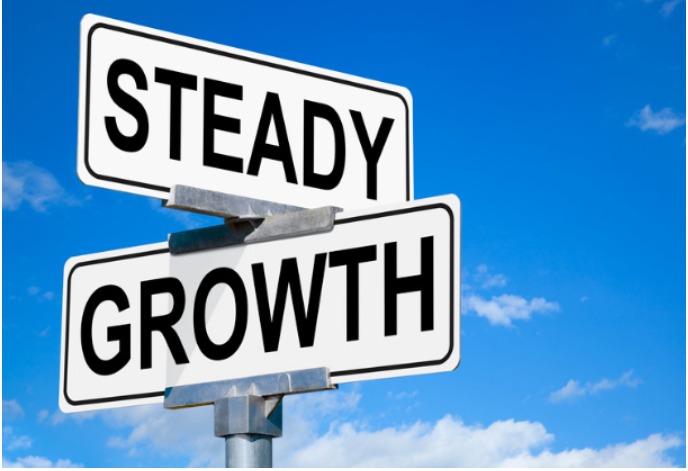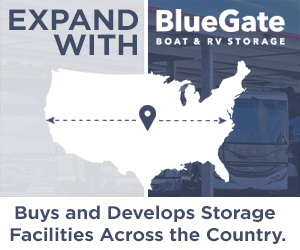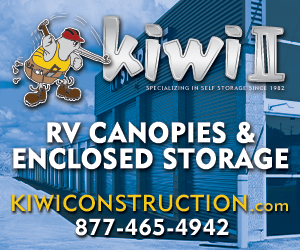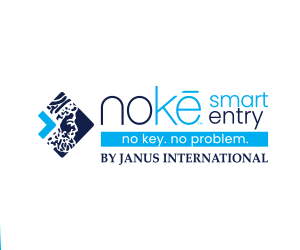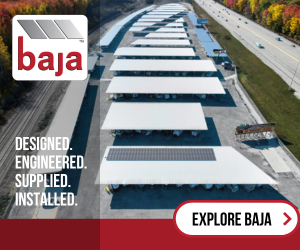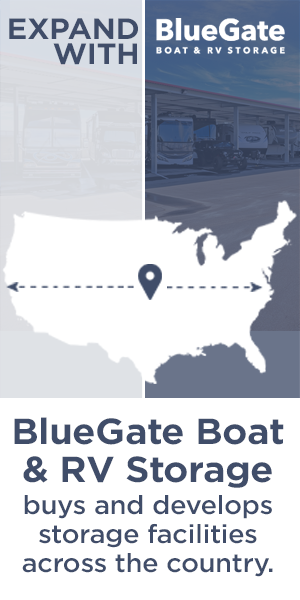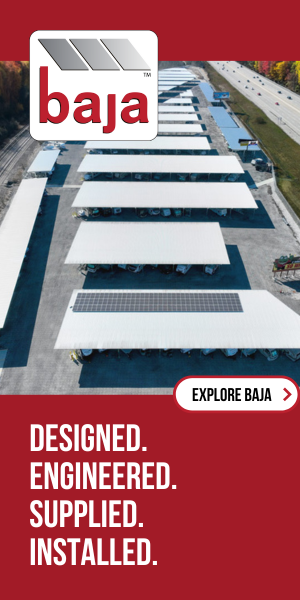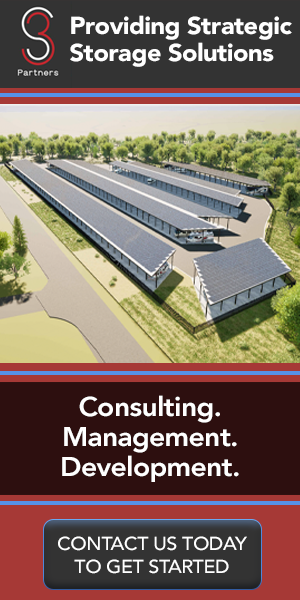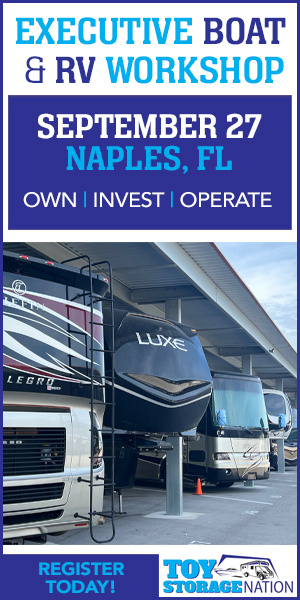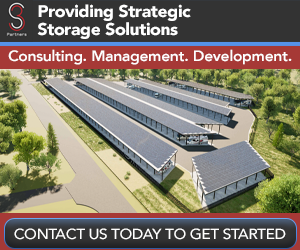By Dees Stribling, Bisnow National
FacebookTwitterLinkedInEmailPrint
The pandemic-era boom for the self-storage sector, but that doesn’t mean a bust is on the way.
Coming off two years of unprecedented occupancy, rental and development growth, self-storage is returning to normalcy. That isn’t a bad thing — normal means strong enough fundamentals to keep occupancies and rents high. And while investment volume is slowing down like all other CRE investment, there is still plenty of capital looking for a home in self-storage.
“Self-storage is returning to its seasonality,” said Ryan Gibson, chief investment officer at Spartan Investment Group, which began as a residential investment firm but now focuses on self-storage. “That is, in the fourth quarter, more people moved out than in, and now we’re approaching the spring leasing season.”
Seasonality vanished in 2021 and 2022, Gibson said. Demand was consistently strong during that period, contrary to typical cyclical leasing patterns for the property type.
“Self-storage is dependent on life events, and unfortunately, when you have a tumultuous economy, you see people have more life events — moving, downsizing, relocating, changing jobs,” Gibson said.
The pandemic bonanza was driven by the same kinds of life events that always determine self-storage demand, though the press of events was stronger and more relentless, even in the winter months, he said.
One niche example is boat and RV storage, which is often a for-sale product rather than rental. Sales of RVs and boats reached new highs as people reassessed their lifestyles in the pandemic, but neighborhoods (and especially homeowners associations) didn’t become more tolerant of them being parked in driveways. Last year, the average sale price for a boat and RV storage facility was $624K, a large jump from 2021’s record level of $447K, according to Yardi Matrix data.
But as the pandemic has lost its edge, so has self-storage. Demand for the property type started to drop toward the end of 2022, and so did rents. The national rate for self-storage units that aren’t climate-controlled came in at $128 per month in November 2022, or 2% down from a year earlier, according to Matthews Real Estate Services. Climate-controlled units averaged $144, a 0.8% drop year-over-year.
“The slowdown isn’t a surprise since the gains during the pandemic weren’t sustainable in the long run,” Matthews Vice President of Self-Storage Austin McLeod said, adding that despite the decreases, rents are still historically high in the sector, and some metros, including such growth regions as Nashville, Tennessee; Orlando, Florida; and Dallas-Fort Worth, are still reporting rent growth.
Self-storage occupancy rates will mostly hold steady in 2023, Matthews Real Estate forecasts, as inflation impacts the volume of goods people buy somewhat, thus limiting the amount of stuff people have to store. Average self-storage occupancy came in at 92% for 2022. During the pre-pandemic years from 2015 to 2020, self-storage occupancy rates averaged above 90%.
Development has slacked off following a five-year binge. Last year, more than 1,550 self-storage projects were completed, but only about 830 projects are underway, though another 640 or so are planned, according to Yardi Matrix data. Though their development doesn’t take as long as more complicated property types, self-storage projects often take more than a year to complete.
“Development isn’t falling off a cliff, but it is moderating,” McLeod said, pointing to elevated interest rates and the high cost of construction as hampering new supply. “It can be difficult to get a project to pencil now, so developers are abandoning them or just putting them on hold.”
As demand for space eases somewhat, slower development isn’t necessarily a bad thing for the sector, McLeod said.
“Oversupply has always been a possibility, especially in certain markets,” he said. “A massive amount of supply came online in the years before the pandemic, and there were fears of oversaturation then, which put downward pressure on rents in some places. We had that happen in a market like Miami, but then 2020 and 2021 came along and essentially eliminated that oversupply.”
Investment sales are also moderating, but investors are still seriously interested in the sector.
Self-storage investment sales totaled $10B in 2022, down 18.7% from $12.3B in 2021, according to Yardi Matrix data. Even so, last year’s sales activity was more than double any year before the record high of 2021, with institutional investors keen to be in the sector as the number of households using self-storage hit historic highs.
In January, Prime Group Holdings closed its third self-storage fund, Prime Storage Fund III, which totaled $2.5B, well over its $1.5B target. It is the largest fund ever raised focused exclusively on self-storage, according to PERE. The fund has seen interest from a broad spectrum of investors, including sovereign wealth funds, family offices, pension funds, insurance companies, university endowments, banks and foundations.
The aim of the fund is to get properties while the getting is good, according to Prime Group CEO Robert Moser.
“As time goes on, the asset class goes from being 80% fragmented to the low to mid-60s,” Moser told PERE. “When that happens, it becomes infinitely more difficult to buy deals off-market.”
Prime Group is one of the largest private owners of self-storage in North America, owning and operating over 320 self-storage facilities representing about 180,000 units.
In February, Spartan Investment Group kicked off three funds totaling $175M and focused on various strategies for investing in the self-storage sector, including developing, acquiring and financing properties in U.S. growth markets.
Nuveen Real Estate, which has more than $154B in assets under management, has invested in MyPlace, a self-storage platform that was launched by Kurt O’Brien, founder and former CEO of Simply Storage. The partners started acquiring assets together in 2022 and have about $300M in self-storage assets under management, with a goal of upping that total to about $1B over the next two years.
“It’s kind of a flight to safety, and a lot of investors know that self-storage over the last 40 years has been recession-resistant,” Gibson said.
“Commercial real estate is facing headwinds as the Fed continues to raise interest rates, which probably means layoffs, even though the jobs reports have been good,” Gibson said. “In any case, investors see self-storage is a safe place, a safe bet for placing capital.”
In February, self-storage startup Stuf closed an $11M Series A financing round led by Altos Ventures and Allegion Ventures, with participation from Wilshire Lane Capital and Harlem Capital, among other investors.
Stuf’s business model is taking existing and underutilized space in commercial properties — basements, extra parking space and so forth — and retrofitting them to be tech-accessible self-storage, ideally closer to a base of renters. It has 22 locations and plans national expansion with the funding.
By repurposing spaces in existing buildings, the company doesn’t have to deal with the time and cost associated with new construction, Stuf CEO Katharine Lau said.
“What I heard from investors across the board is, yes, self-storage really needs improvement,” Lau told Bisnow. “They’re surprised that no one has really tackled this approach before.”
Contact Dees Stribling at dees.stribling@bisnow.com









